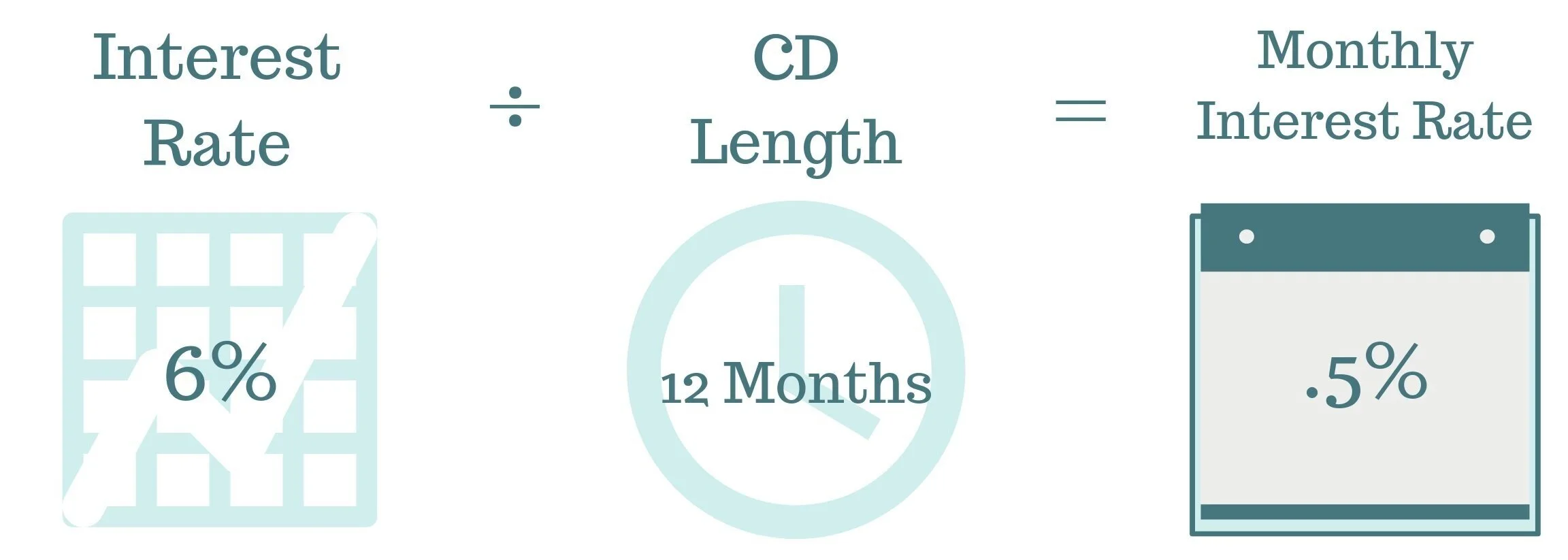A CD’s interest rate will be stated in two ways:
1) the interest rate, and
2) the Annual Percentage Rate (APY).
The APY will always be slightly higher than the interest rate.
In this example, if you have a 12-month CD, and the interest rate is 6%,
the APY will be 6.16%. These bank percentages are
always stated as annual percentage rates.




